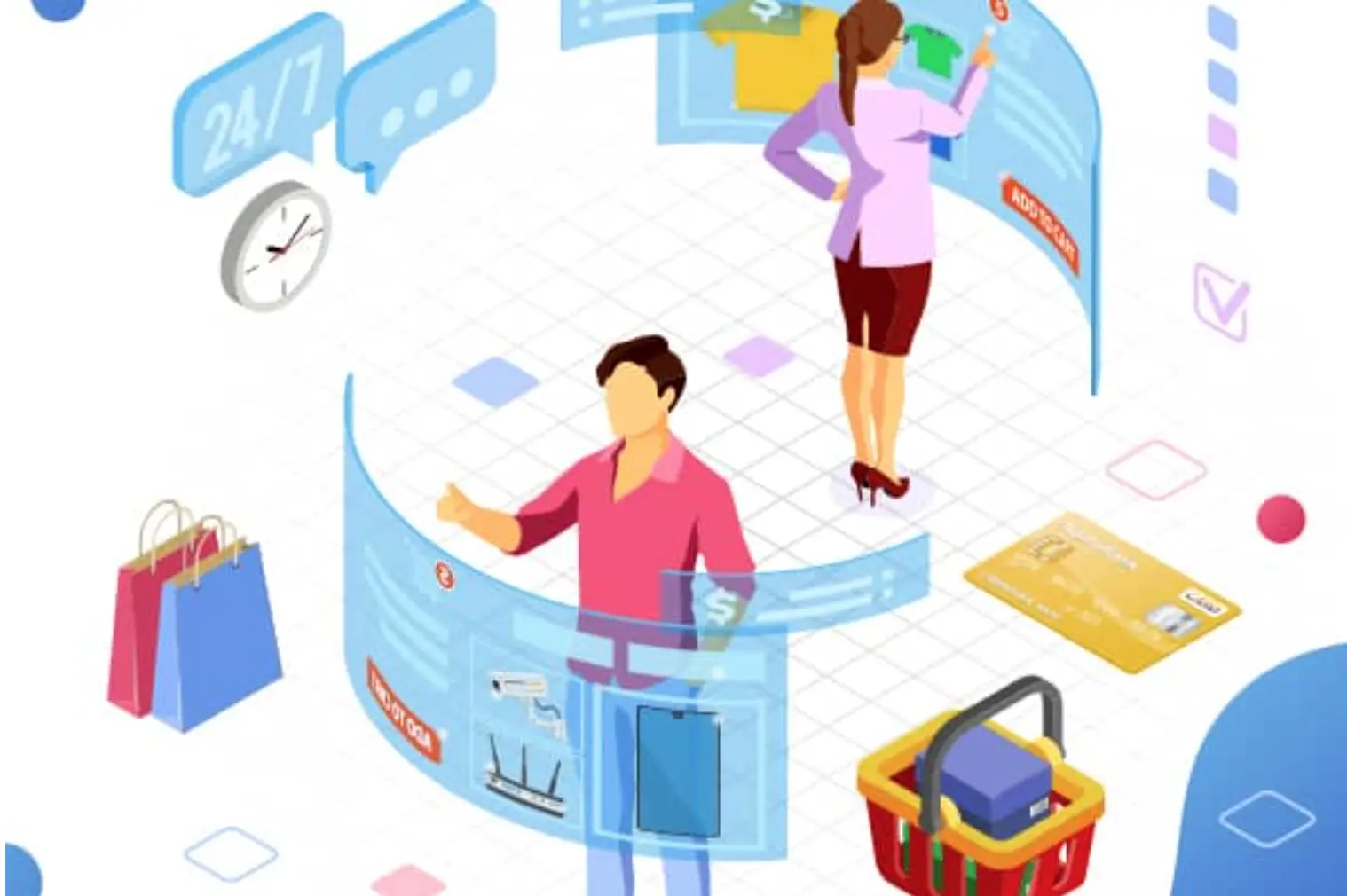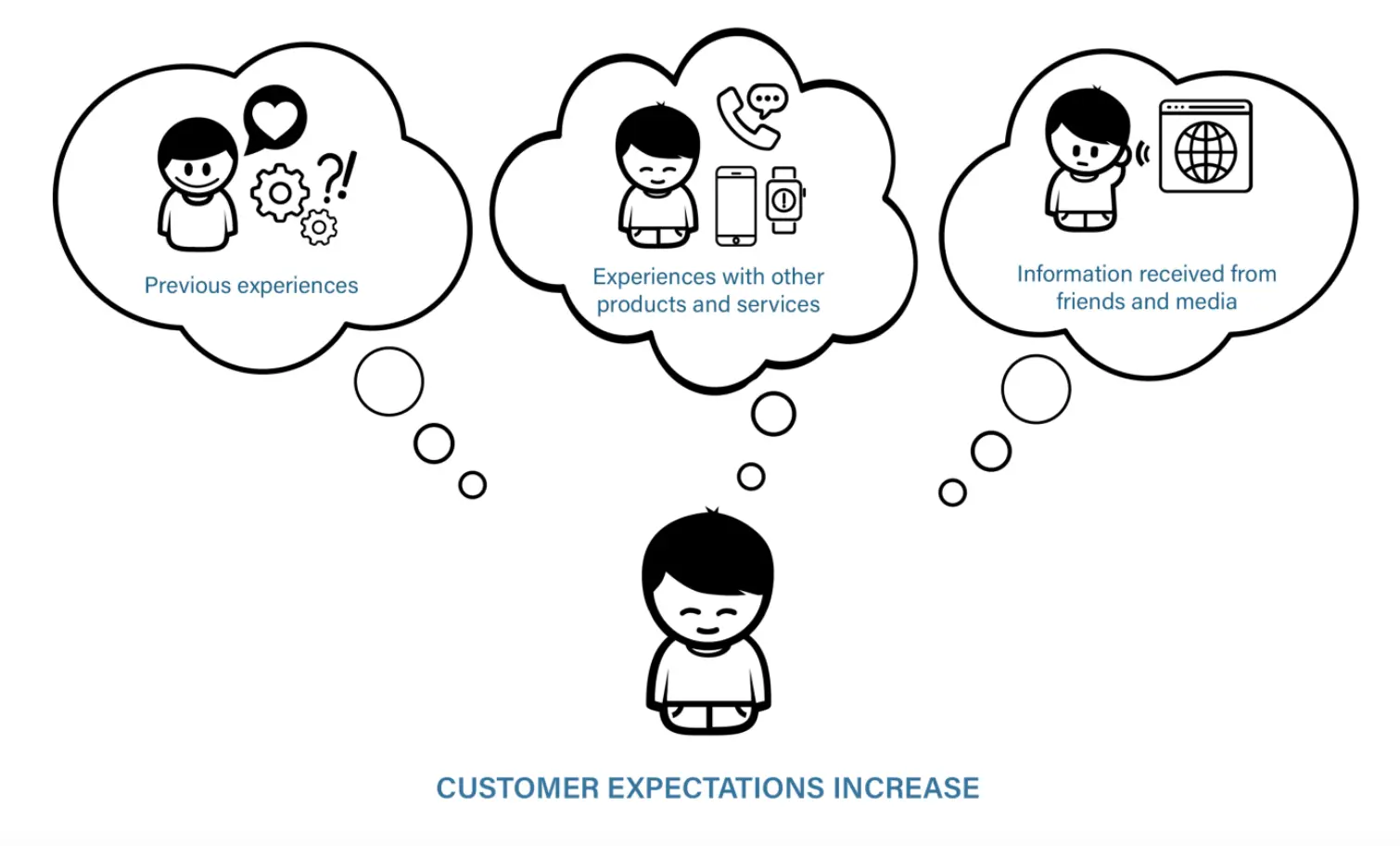Gen Z and millennials dominate today's online customers. These two online consumer segments expect a high-quality user experience. For an omnichannel strategy to succeed, it requires well-developed systems, technology, and multiple departments to work together in a single path.
The next stage of transformation for online marketing campaigns is omnichannel marketing. This blog will cover the future and current trends of omnichannel marketing that you must use in 2023.
What is The Future of Omnichannel Marketing?
- Phygital marketing
- Continued digital growth
- Rapidly evolving customer experience
- Data is king
The future of omnichannel marketing is all about integrating physical and digital experiences, and it is one of the best digital marketing strategies that offer the most benefits.
Transformative technologies are going to build the future of omnichannel marketing. It includes virtual reality (VR), artificial intelligence (AI), augmented reality (AR), smart sensors, cloud computing, smart materials, green technology, sustainable energy, and much more.
Virtual reality software development can improve multi-channel experiences for customers, allowing them to interact with brands in a more immersive and engaging way.
Consumer expectations will continue to rise rapidly in the upcoming years. As consumer behavior is shifting towards online, it becomes crucial for eCommerce marketers to implement significant changes.
1. Phygital marketing

Phygital marketing combines digital experiences with physical ones to deliver customers the best and most engaging user experience. By combining the convenience and flexibility of online shopping with the sensory engagement of in-store shopping, brands can create a phygital marketing experience that combines both.
The pandemic had created a barrage of changes, which hit the retail world hard, giving customers the power to purchase. With vast online options, customers can choose brands/products.
2. People love the digital experience

In the past, customers were accustomed to having an in-person experience rather than losing it entirely in the digital realm. Creating blended experiences through video, screen sharing, and other mediums is better.
The omnichannel experience makes it easier for customers to switch between different communication platforms while they are engaged with your business. By offering customers a more seamless experience as they move from one platform to another, you provide them with the convenience and control that is critical in today’s market.
Keeping the customer at the center of a brand's focus creates immense growth and new business opportunities. Omnichannel customers have a 30% more lifetime value than those shopping through only one channel.
Besides this, omnichannel marketing has a 90% higher customer retention rate than a single channel.
3. Customers are changing rapidly
Removing the stress from shopping will be an essential marketing strategy in the future of omnichannel marketing. That will happen with two dimensions, i.e., the wise use of money and time.
Notably, young shoppers have solid values and ethics about society, community, and the companies they do their business. Online consumers are becoming more conscious of global impact and trust factors.
In the upcoming time, shoppers will see shopping in the context of their life. It's all linked to the broader movement of health and wellness. It will continue to rise as shoppers emphasize delivering what they want to do in their downtime.
4. Data is the new marketing currency
Shoppers'/customers' relevant and vital information is the powerhouse of omnichannel marketing, as it is the foundation of the personalized experiences you deliver. It presents retail brands with challenges and opportunities in equal measure.
Managing the cross-channel product, customer, and sales data will create a unified customer profile that will help to deeply understand the customer's needs, wants, and motivation.
Top 7 Trends of Omnichannel Marketing
Omnichannel marketing trends are the secret window to watch the future. The rules of online marketing are changing drastically, and only those brands that can manage and respond well to these trends can stay in the competitive market.
If you want to deliver a seamless user experience across all your different sales channels, then given below are some of the crucial trends that you must keep an eye on:
1. Rapid growth in video marketing

In the past few years, video marketing has seen emerging popularity, and businesses have realized that it is one of the best ways to represent your message. Creating video content is the perfect way to unify your marketing practices across all channels and keep your customer engaged throughout the journey.
These marketing videos can be in the form of announcing your brand and showcasing your products/services/offers. Video marketing lowers the website bounce rates, increases organic ranking, and allows you to highlight/reflect essential information.
In omnichannel marketing, videos are very efficient, as they work perfectly in physical locations, social media platforms, mobile, etc., drafting a unified high-quality user experience for your customers.
2. Streamlined customer service experience
Customers in a competitive online market are more likely to check for different options and monitor user feedback. A physical store opening allows the customers to view, feel, or even try your products/items before purchasing them, as there are different perks and benefits of both shopping options.
From this perspective, omnichannel marketing becomes a great help. It helps connect with more physical and online stores and enables you to sync real-time data to deliver the best omnichannel marketing experience.
Staying updated on marketing automation trends allows businesses to streamline their efforts and deliver personalized experiences at scale.
3. Virtual shopping

As innovative retailers bring the in-store experience to the online world, real-time access to knowledgeable sales is becoming more critical. Video calls, live chat, and social media engagement allow the sales associates to help the shoppers navigate the buying process.
One of the best and fastest-growing technologies for virtual shopping is video chat. Videos in omnichannel marketing can connect online shoppers with in-store sales assistants and bring the interactive benefits of the in-store experience to their homes.
4. Brick-and-mortar is here to stay
A brick-and-mortar store is an appealing option for many retailers, providing an opportunity to increase their presence in local communities while including another sales channel into the mix.
The increasing cost of acquiring online customers, boosting high online return rates, and the ability to provide better retail experiences have helped make the branching prospect out into physical locations more appealing.
Brands are now understanding the power of effective omnichannel marketing, offering beyond the importance of in-person and in-store experiences.
5. Multichannel marketing attribution

A successful marketing campaign is always focused on driving higher returns on investment.
But, customer journeys are not linear, and one marketing channel will not give you a complete idea of your sales success. To fully utilize omnichannel marketing strategies, multi-channel attribution is a must.
Multi-channel attribution helps to collect relevant and valuable data across all the channels in real-time and deploy cross-channel analytics to examine consumer behaviors holistically.
Digital marketers are already familiar with multi-channel attribution for a long time. What has changed is the merging of digital techniques with offline channels.
6. Drastic change in customer expectations

Markets were and will be fundamentally consumer-driven. Therefore, keeping a close eye on what your customers expect from their online or offline experience becomes essential.
It does not matter which online channel or platform a brand uses; customers always expect the brand to deliver consistent information and experience. In comparison, inconsistent experiences can cost you relevant customers.
7. Social selling

Social commerce is boosting more than ever. Brands use social media platforms to deliver marketing, sales, promote, and manage online reputation. With diverse ethnicities, a broad representation of genders, a spectrum of body shapes, and varying levels of mobility, shoppers need people who look like them.
Brands certainly have the opportunity to do more in this area, but as marketers, you must know the amount of content created daily needs to be improved. We can only physically do some things independently, but online influencers can do them.
Partnering with online influencers who express your brand while helping a subset of the targeted audience is a great way to build credibility and trust with your customers.
User-generated content is a credible solution for tight marketing budgets, as brands will have real people marketing their products, and they don't have to find interactive ways to design marketing campaigns that meet all the needs.
Build Your 2023 Omnichannel Marketing Strategy
According to Google statistics, omnichannel marketing strategies count for increasing store visits by 80%. Some omnichannel marketing techniques are simple and sober, i.e., buying online and picking up in-store or social selling.
An average shopper will want to engage with your brand in different ways and digitally, along with other platforms that matter to them. Therefore, it's crucial to implement an omnichannel marketing strategy for your business.
Omnichannel marketing is not the future; it's already here. Technology has come a long way over the decade, and there's no doubt that the future will change. Omnichannel marketing will help you to boost your availability and brand awareness, increasing online sales and traffic and integrating digital touchpoints.
About Author
Nishant Kapoor is the Marketing Director at Advology Solution. Nishant Kapoor creates high-quality marketing strategies that help businesses to reach a larger targeted audience through digital methods and targeting the prospects who are most likely to avail of their products/services. His passion is helping businesses to evolve how successful entrepreneurs think, take action, and manage a team to achieve higher impact.


